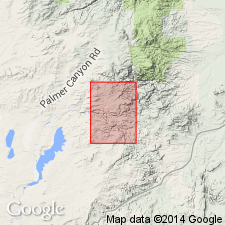
- Usage in publication:
-
- Bluegrass Creek Metamorphic Suite*
- Modifications:
-
- Named
- Mapped 1:24k (Bull Camp Peak quad, Albany Co, WY)
- Dominant lithology:
-
- Marble
- Gneiss
- Amphibolite
- Schist
- Quartzite
- AAPG geologic province:
-
- Green River basin
- Southern Rocky Mountain region
Summary:
Bluegrass Creek Metamorphic Suite. Includes all generally layered supracrustal metasedimentary and metavolcanic rocks. Subdivided into 6 unnamed lithologic units (separately mapped): marble, felsic biotite gneiss, amphibolite, pelitic schist, quartzite, and gedrite schist. Older than mafic and ultramafic rocks of Kennedy dike swam; in part time-equivalent to and intruded by Laramie River Complex (Snyder and others, 1997, USGS I-2235). Age is Archean; older than about 2.7 Ga.
Type locality: exposures along Bluegrass Creek, Bull Camp Peak 7.5-min quadrangle, north-central Albany Co., central Laramie Mountains, southeastern WY. Named from Bluegrass Creek.
Source: Publication.
For more information, please contact Nancy Stamm, Geologic Names Committee Secretary.
Asterisk (*) indicates published by U.S. Geological Survey authors.
"No current usage" (†) implies that a name has been abandoned or has fallen into disuse. Former usage and, if known, replacement name given in parentheses ( ).
Slash (/) indicates name conflicts with nomenclatural guidelines (CSN, 1933; ACSN, 1961, 1970; NACSN, 1983, 2005, 2021). May be explained within brackets ([ ]).

